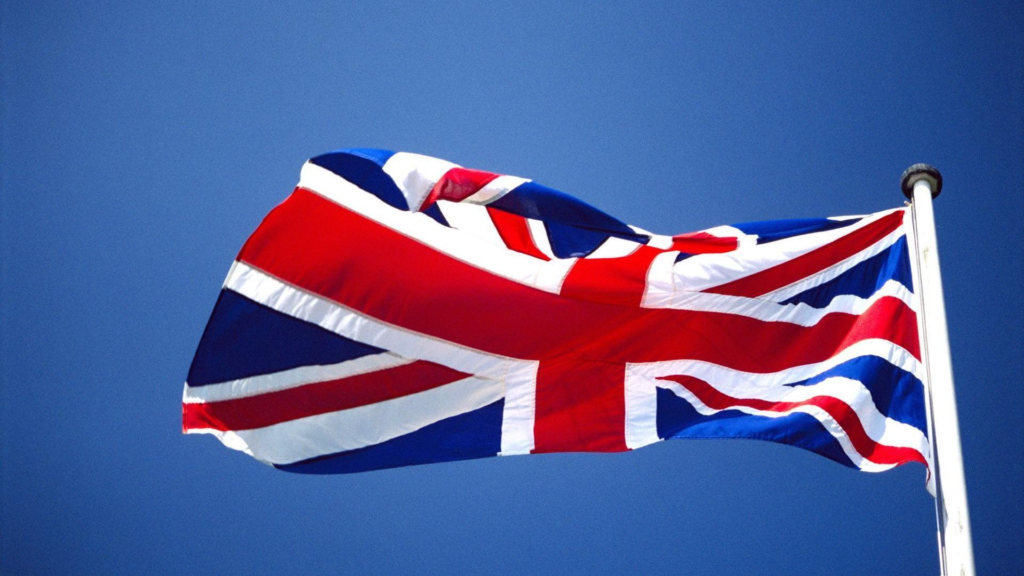The England flag, often referred to as the St. George’s Cross, is a simple yet potent symbol of English identity. This iconic design, consisting of a bold red cross on a white background, has flown over England for centuries, evolving alongside the nation’s history and reflecting its complex cultural tapestry.
Origins and Symbolism
The origins of the St. George’s Cross are somewhat shrouded in mystery. While the legend of Saint George slaying the dragon dates back to the 4th century, the association of the red cross with England is more recent.
Early Uses: The red cross began appearing on the shields of English crusaders during the 12th century.2 By the 14th century, it had become a prominent symbol on English battlefields, representing courage and valor.
Royal Patronage: King Richard I, known as “Richard the Lionheart,” is often credited with popularizing the use of the red cross. He adopted it as his personal emblem during the Third Crusade, further solidifying its association with English military might.
Naval Ensign: The St. George’s Cross remained a significant symbol for centuries, eventually becoming the naval ensign of England. This maritime connection highlights the nation’s historical dominance on the seas.
The Union Jack: A Symbol of Unity
In 1606, England and Scotland united under the rule of King James I. To commemorate this significant event, a new national flag was created: the Union Jack. This groundbreaking design combined the St. George’s Cross of England with the Saltire of Scotland.
Evolution of the Union Jack: The Union Jack underwent further modifications in 1801 when Ireland joined the United Kingdom. The cross of Saint Patrick, a red diagonal cross on a white background, was added to the Union Jack, creating the flag we know today.
Symbol of Unity: The Union Jack symbolizes the unity of England, Scotland, and Northern Ireland within the United Kingdom.4 However, it’s important to acknowledge that this symbol of unity does not resonate equally with all citizens within these nations.
The St. George’s Cross: A Resurgent Symbol
While the Union Jack represents the United Kingdom, the St. George’s Cross has experienced a resurgence in popularity in recent decades.
English Identity: Many people see the St. George’s Cross as a powerful symbol of English identity, distinct from the broader British identity.
Sporting Events: The flag is prominently displayed at international sporting events, particularly football matches, where it serves as a rallying point for English supporters.
Political Symbolism: The St. George’s Cross has also been adopted by some political groups, particularly those associated with right-wing nationalism. This has led to concerns about the flag’s appropriation and its potential to be associated with xenophobic or discriminatory views.

The St. George’s Cross and Controversy
The use of the St. George’s Cross has not been without controversy.
Racial Tensions: In recent years, there have been concerns about the misuse of the flag by far-right groups to promote racist or xenophobic ideologies. This has led to debates about the flag’s appropriation and its potential to incite hatred.
Cultural Sensitivity: Some argue that the prominence of the St. George’s Cross within the UK can overshadow the identities and cultures of other nations within the Union, particularly Scotland and Wales.
Symbol of Exclusion: For some, the flag can represent a past of colonialism and imperialism, evoking feelings of exclusion and resentment.
The St. George’s Cross Today
Today, the St. George’s Cross remains a potent symbol with diverse meanings. It continues to evoke strong emotions among different groups, representing pride, patriotism, and unity for some, while for others, it evokes feelings of exclusion, anxiety, and even fear.
Controversies and Challenges
Racial and Social Tensions: The association of the St. George’s Cross with far-right groups has led to concerns about its appropriation and its potential to incite racial and social division.
Cultural Sensitivity and Inclusivity: The prominence of the St. George’s Cross can sometimes overshadow the identities and cultures of other nations within the UK, leading to concerns about cultural sensitivity and inclusivity.
Re-evaluating Symbolism: In an increasingly diverse and multicultural society, there is a growing need to re-evaluate the symbolism of the St. George’s Cross and to ensure that it represents the values of inclusivity, tolerance, and respect for all.
Moving Forward
Open Dialogue and Understanding: Open and respectful dialogue is crucial to address the controversies surrounding the St. George’s Cross. It’s important to understand the different perspectives, acknowledge the historical complexities, and engage in constructive conversations about its meaning and its place in contemporary society.
Education and Awareness: Education plays a vital role in fostering understanding and promoting respectful dialogue. By learning about the history and symbolism of the flag, we can develop a more nuanced and informed understanding of its significance.
Promoting Inclusivity: It’s crucial to ensure that the St. George’s Cross is not used in ways that exclude or marginalize any group within society. Promoting inclusivity and celebrating the diversity of cultures within the UK is essential for a harmonious and cohesive society.
Final Thoughts
The St. George’s Cross is a complex symbol with a rich and layered history. It represents England’s military past, its maritime prowess, and its evolving identity within the United Kingdom. While the flag continues to be a source of pride and unity for many, it is crucial to acknowledge its potential for misuse and its impact on different communities. By engaging in open and respectful dialogue about the flag’s symbolism and its place in contemporary society, we can work towards a deeper understanding of its significance and its role in shaping our shared future.
FAQs
What is the England flag called?
The England flag is officially known as the St. George’s Cross. It consists of a bold red cross on a white background.
What is the origin of the St. George’s Cross?
While the legend of Saint George slaying the dragon dates back to the 4th century, the association of the red cross with England is more recent. It emerged during the 12th century among English crusaders and gained prominence with the support of King Richard I.
What does the St. George’s Cross symbolize?
The St. George’s Cross has come to symbolize English identity, military valor, and national pride. It is often associated with courage, chivalry, and the ideals of Englishness.
To read more, Click Here




Leave a Reply